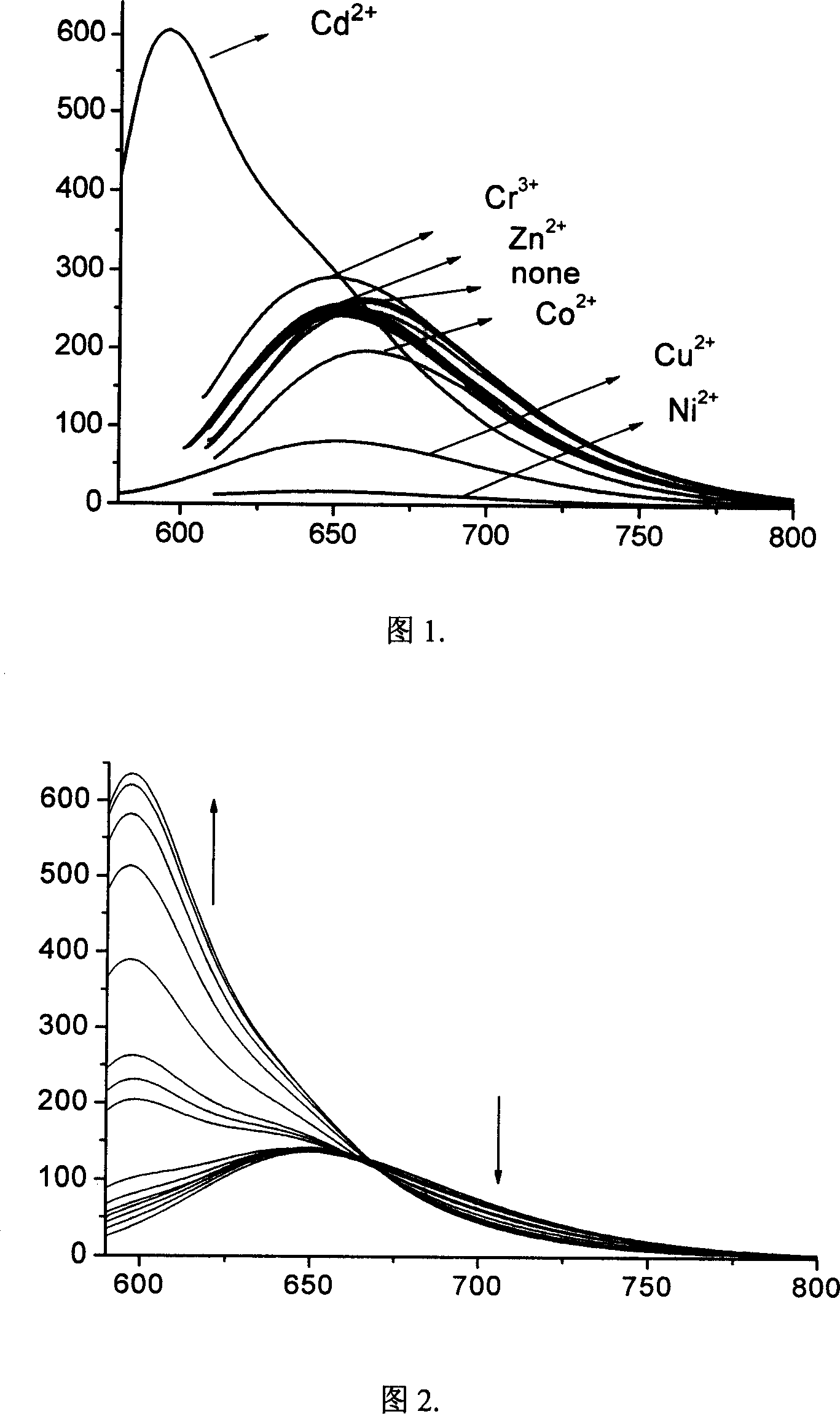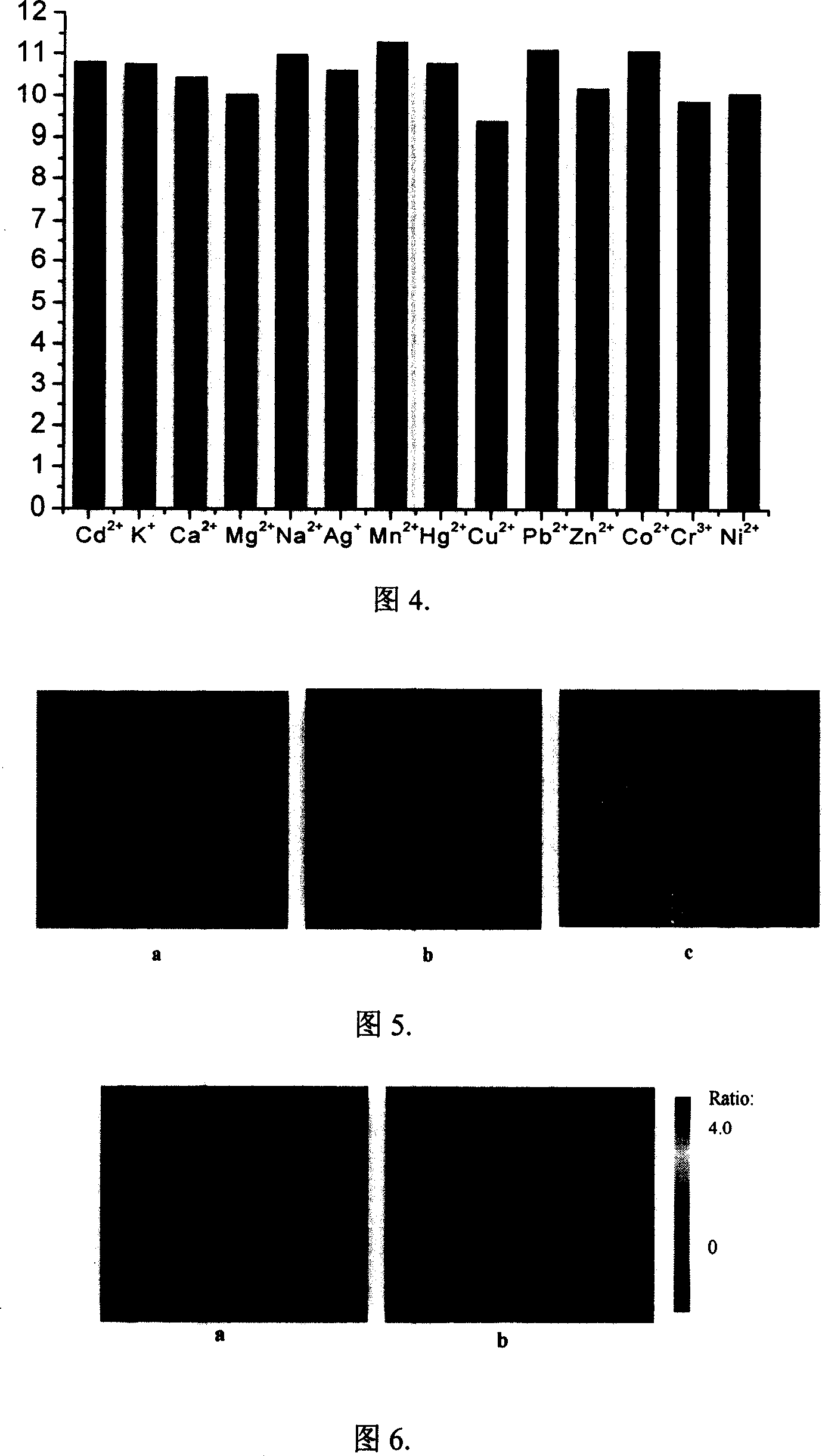Fluorescent probe of fluorin ¿C boron dyestuff in use for detecting cadmium ions inside cell
A technology of fluorescent probes and boron fluoride, which is applied in the fields of fluorescence/phosphorescence, luminescent materials, biological testing, etc., and can solve the problems of limited change of cadmium ions and large interference of cadmium ion detection
- Summary
- Abstract
- Description
- Claims
- Application Information
AI Technical Summary
Problems solved by technology
Method used
Image
Examples
Embodiment 1
[0032] Synthesis of Probe I-1:
[0033]
[0034] (1) Synthesis of intermediate 2
[0035] Add 150ml of dehydrated dichloromethane as a solvent into a 250ml one-necked flask, then measure 0.14ml of acetyl chloride (1.95mmol) and 0.4ml of 2,4-dimethylpyrrole (3.89mmol) into the above reaction solution, and protect the mixture under argon. Under the condition of heating and refluxing for 10 hours, the color of the solution turned black, and the reaction of the raw material 2,4-dimethylpyrrole was found to be completed by thin-layer chromatography detection. About 100ml of dichloromethane was removed by rotary evaporation, 8ml of boron trifluoride ether solution (7.52mmol) and 4ml of triethylamine (28.65mmol) were slowly added to the solution after rotary evaporation, the reaction was violent and a large amount of heat was released, 4 After one hour, the reaction was completed, and the dichloromethane solvent was removed by rotary evaporation to obtain a dark brown viscous liq...
Embodiment 2
[0045] Probe I-1 selectivity for cadmium ion:
[0046] The selectivity to cadmium ion was evaluated using the compound I-1 synthesized above. Add 5 μM of compound I-1 to the Tris-hydrochloric acid buffer (acetone / water=9 / 1, v / v) of pH 7.4 with a thirty-fold excess of various metal ions, the excitation wavelength of the probe is 580 nm, The emission wavelength is 597nm, and the test results are shown in Figure 1. It can be seen from the figure that probe I-1 has a high selectivity for cadmium ions, and the addition of cadmium ions produces a large blue shift and fluorescence enhancement. In addition, metal ions such as sodium, potassium, calcium, magnesium, and manganese Detection without interference.
Embodiment 3
[0048] Insensitivity of probe I-1 to pH:
[0049] Use the compound I-1 synthesized above to evaluate the response to pH. For compound I-1, adjust the pH value to about 2.0 in an aqueous solution with an ionic strength of 0.1. After measuring the fluorescence intensity, add lye to slowly increase the pH value. The corresponding changes in fluorescence intensity were recorded, and the test results are shown in Figure 3. It can be seen from the figure that probe I-1 has a very low pK a In the range of pH-12, the pH change has basically no effect on the fluorescence emission. Therefore, probe I-1 can be used for the detection of intracellular cadmium ions in a large pH range.
PUM
 Login to View More
Login to View More Abstract
Description
Claims
Application Information
 Login to View More
Login to View More - R&D
- Intellectual Property
- Life Sciences
- Materials
- Tech Scout
- Unparalleled Data Quality
- Higher Quality Content
- 60% Fewer Hallucinations
Browse by: Latest US Patents, China's latest patents, Technical Efficacy Thesaurus, Application Domain, Technology Topic, Popular Technical Reports.
© 2025 PatSnap. All rights reserved.Legal|Privacy policy|Modern Slavery Act Transparency Statement|Sitemap|About US| Contact US: help@patsnap.com



